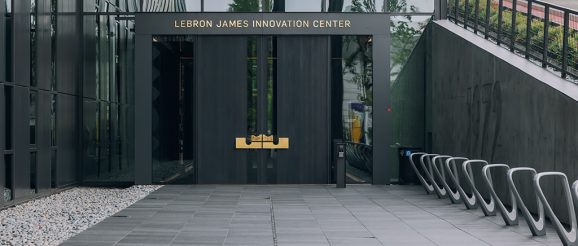How Nike’s LeBron James Innovation Center Will Inform Future Products – Footwear News

Innovation has always been at the center of everything Nike does. Now, the athletic giant has a new facility at the heart of its headquarters to fuel creativity.
Nike announced the opening of the LeBron James Innovation Center today, a massive building that consumes more than 750,000 square feet of the company’s campus in Beaverton, Ore. According to the company, the facility “is where listening to the voice of the athlete is made tangible,” and is a place where athletes are observed while others are prototyping, testing and creating the future.
The highlight of the center, which consumes its top floor, is the new Nike Sport Research Lab.
“It was four years of building, but the idea predates and probably goes back to 2013 when we first started sort of drawing on a napkin, dreaming about ‘what if,’” Matthew Nurse, VP of the Nike Explore Team Sport Research Lab, told FN. “There was a lot of attention paid to the path of the athlete and how we can make this a beacon of inspiration for athletes of all abilities and levels. We want it to be as relevant 30 years from now as it is today, so there was a lot of thought as to how the space can be flexible as sport evolves for athletes and how can we meet their needs.”
This new facility — which also includes a 500-foot ramp at a 15.63% incline outside the building for athletes to train without natural hills — is a massive leap in size and ability from the company’s small lab in Exeter, NH, opened more than 40 years ago, and is five times the size of its current operations.
The NSRL floor spans 84,000 square feet that is solely dedicated to sport research, and the tools at the company’s disposal are seemingly endless. The list of tech inside the facility includes 400 motion-capture cameras, 97 force plates, body-mapping equipment, four advanced climate chambers that mimic a variety of conditions, a full-size basketball court, a 200-meter endurance track, a 100-meter straightaway and an artificial turf training pitch.
With this equipment, Nike said it will be able to capture athletes in motion at full speed, which will support its research and development efforts that encompasses both mental and physical well-being. Breaking down its purpose further, Nurse said the facility will deepen its relationship with athletes by “leading with science to objectively understand and provide measurable and palpable benefits to our athletes and consumers.”
Because of the advanced tools at its disposal, Nurse explained how Nike will have the information needed to better inform the products it releases for athletes of all levels today and long into the future.
“Through a sports science lens, moving from choreographed movement to free flowing movement actually broadens the aperture of the types of problems we want to solve,” Nurse said. “If you’re doing basketball or running, historically you want to break a movement down to its parts — and there’s still value in that, the cutting, landing, jumping, decelerating, accelerating and so forth. But you learn something different when you let people do it naturally in a space.”
He continued, “And when you underpin the technology with digital platforms that are able to tag and contextualize the data, you also start to aggregate knowledge and information. You can start to understand the longer term effects of things like how we build apparel for basketball, for example. We can measure it in a moment in time, but three years into collecting data, you can start to extrapolate different understandings of how our products work with athletes and how we can continue to improve those things.”
Beyond the top NSRL floor, new space is the home to several others on staff, people Nike referred to as an “insatiably curious community” that includes biomechanics researchers, robotics experts, computational designers and patent pros. Because of this, Nike said the facility is designed to facilitate collaboration and expeditious prototyping.
“In the innovation space, we take information from the NSRL, and we are able to look at different ways to solve an athlete’s problem. It gets extremely interesting,” Nike VP of Apparel Innovation Janett Nichol said in a statement.
Nike equipped the building with everything the company needs to produce prototypes in less than an hour and then have them tested with the ability to make adjustments on site, and that process can be repeated until they get it just right.
Beyond what the center will do in both the short-and long-terms for athletes of all levels, it is also a pillar of sustainability. The building will use 40% less water because of water-efficient fixtures and will run off of 100% renewable electricity, thanks in part to its 908 solar panels on the roof. Nike said its 322 kw rooftop solar array is expected to generate roughly 10% of the building’s electricity, and the remaining 90% will be serviced by wind farms in the Columbia Gorge.
Also, Nike said 85% of construction debris — totaling 4 million pounds — was diverted from landfills through the company’s partnership with Waste Management, 70% of the wood used was from sustainable sources (and 100% is from noncontroversial sources) and 21,210 pounds of Nike Grind used to create the NSRL flooring.
Because of this, Nike said upon completion it will be one of the largest LEED Platinum buildings on the West Coast.
“If you don’t have a safe place to play, you’re not going to play as much as we want, and we want everybody moving,” Nurse said. “Our mission is to make athletes better and make the world better for athletes, and we’re living in an era where sustainability is incredibly important.”
